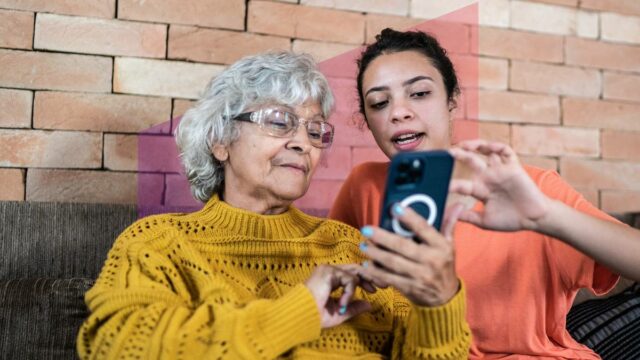What is the Medicare Part D cap?
Beginning January 1, 2025, people with Part D plans through traditional Medicare and Medicare Advantage plans with prescription drug coverage won’t pay more than $2,000 over the calendar year in out-of-pocket costs for their prescription medications. All prescription medications, including specialty medications, covered by Part D plans are included under this cap.
It does not apply to costs for drugs that are not covered under a Part D plan, nor does it cover drugs covered under Medicare Part B, such as injectables and infused drugs. It also does not apply to your monthly Part D plan premiums.
The cap applies to all Medicare beneficiaries with Part D prescription drug coverage, regardless of income level.
Note: beginning in 2026, the Part D cap will be $2,100.
How the Medicare Part D cap helps you
The new cap will help all people enrolled in a Medicare Part D plan by placing a limit on what they will pay each year for their prescription drugs. While the cap applies to all beneficiaries, regardless of income level, it will especially help those who have high out-of-pocket medication costs and do not qualify for the federal Extra Help program.
The cap is automatic. You do not need to do anything to “sign up” for this benefit. The only eligibility requirement is to participate in a Medicare Part D plan. Your health plan will track your out-of-pocket costs for prescriptions medications.
Remember that Medicare open enrollment happens each fall, between October 15 and December 7. During this time, you should review Medicare Part D plans and choose a plan that best meets your health needs.
What is covered by the cap
All prescription medications covered by Part D plans are included under this cap, including deductibles, copayments, and coinsurance for covered drugs.
It does not apply to costs for drugs that are not covered under a Part D plan, nor does it cover drugs covered under Medicare Part B, such as injectables and infused drugs.
What does the Part D cap not include?
This cap doesn’t apply to plan premiums or to drugs your Part D plan doesn’t cover. It also does not apply to out-of-pocket spending on Part B drugs. Medicare Part B covers drugs that are administered by a doctor, nurse, or other healthcare provider in an outpatient setting such as a doctor’s office. For example, some cancer drugs and injectable drugs are covered under Part B.
Does the cap affect my Part D premium?
This cap does not apply to the cost of your Part D plan premium. We encourage you to review premium rates while considering a Part D plan as part of open enrollment.
Paying for covered medications
You will continue to pay your out-of-pocket costs for prescription medications through your pharmacy, unless you join the Medicare Prescription Payment Plan.
If you opt-in to the Medicare Prescription Payment Plan—a payment option available through your health plan starting January 1, 2025—you will be billed monthly by your health plan and will pay them directly instead of your pharmacy.
Are any medications excluded from Part D plans?
Part D plans may choose to not cover certain drugs. However, they are required to cover medications that fall into one of the six protected classes: immunosuppressant (organ transplant), antiretroviral (HIV/AIDS), antidepressant, antipsychotic, anticonvulsant (seizures), and antineoplastic (cancer). Drug plans must cover at least two drugs in other categories.
If you are prescribed a drug that is not covered by your prescription drug plan, here are some options:
- If the non-covered prescription drug is a brand-name medication, ask your healthcare provider whether a generic equivalent might work (if there is one).
- Find out whether there are any other prescription drugs in your plan’s formulary that would be effective.
- Your healthcare provider can try a formulary exception, a request to obtain a Part D drug that is not included on a plan’s formulary. If the plan denies the request, there is an appeals process.
- During the Open Enrollment Period, October 15-December 7, evaluate the plans available to you. You might find one that covers your needed medication.
Please note, if you choose to pay for a medication that is not covered by your prescription drug plan, your payment will not apply toward the Part D cap of $2,000.
How will I know when the $2,000 Medicare Part D cap has been met?
Your Part D plan or Medicare Advantage drug plan will be tracking costs and will determine when the cap has been met.
Other ways to lower out-of-pocket prescription costs
Tips for saving money on prescription medications
If you’re worried about the cost of your prescription medications, help may be available. Different options and resources are available to help reduce out-of-pocket prescription medication costs. Explore our guide to ways you can lower your prescription costs.
Extra Help program
The Low-Income Subsidy (LIS) or Extra Help program, is a federal program that helps people on Medicare drug plans with limited income and assets pay for the monthly premiums, annual deductibles, and copays related to their prescription medications. Extra Help covers almost all costs for the people who are eligible. Learn more and find out if you qualify.
Financial assistance for your prescription medications
Financial assistance options are available from multiple sources: the federal government, state government, nonprofit programs, and the private sector, which usually includes for-profit companies. Read our guide to patient financial assistance.
-
Subscribe to news
Sign up to receive PAN news, from helpful articles to action alerts.
Subscribe today -
-



